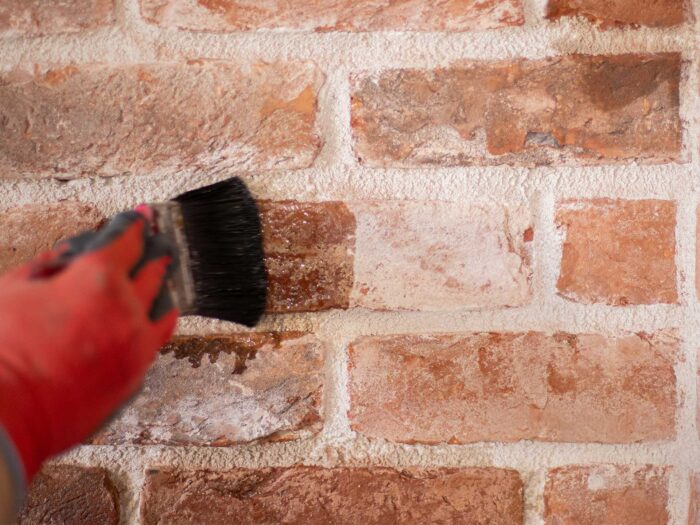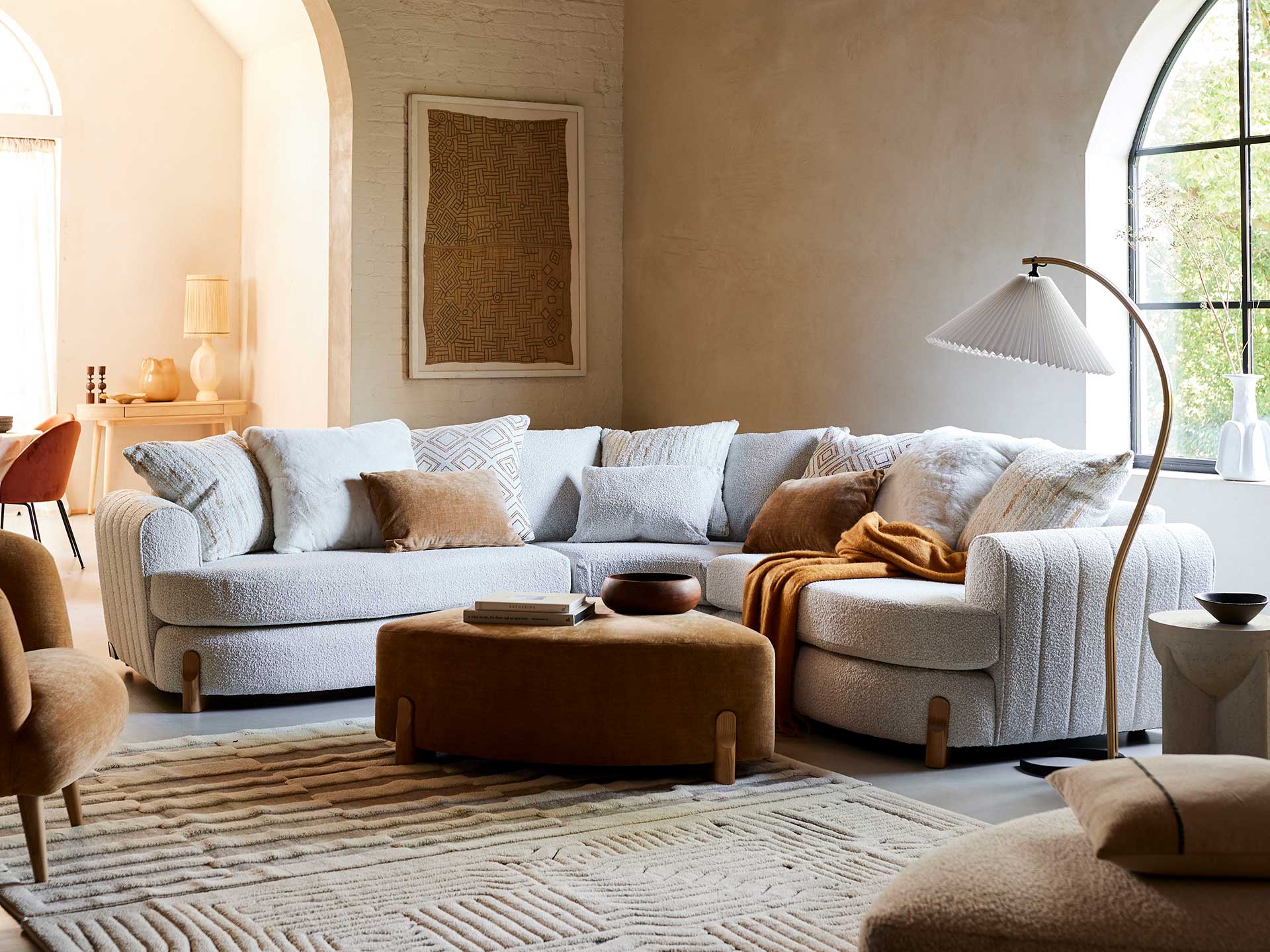
Image credit: DFS
How to incorporate limewash into your home
Limewash has a rich history. Dating back centuries, it’s been used as both a versatile building material and decorative finish through the Egyptian, Greek and Roman times. Each period had their own take on how to incorporate limewash, and over the years, it’s adorned the interiors and exteriors of temples, palaces and homes across the globe.
Limewash acts as a protective barrier to a wall with the benefit of it being a breathable material. It also has strong aesthetic appeal and is having a revival in modern interiors, thanks to its natural colour and texture.
From painted walls and brickwork to furniture, here’s how to incorporate limewash into your home.
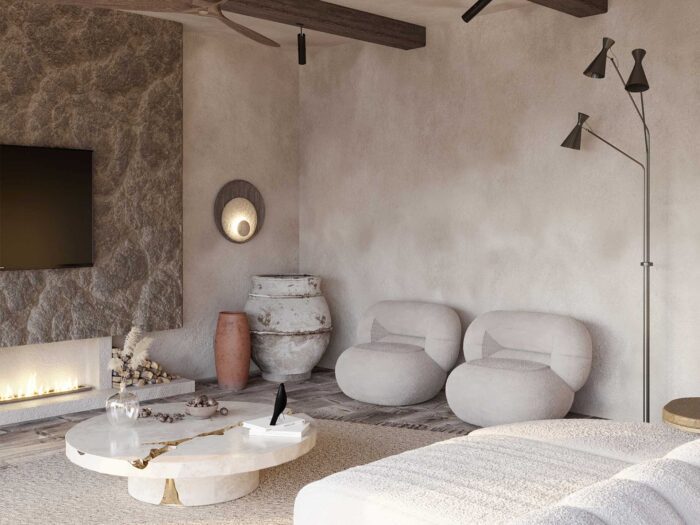
What exactly is limewash?
Limewash is a traditional paint made from a mixture of slaked lime, water, and natural pigments. The lime in limewash refers to the material that’s derived from limestone.
Limestone is a sedimentary rock made of calcium carbonate and when it’s heated (to high temperatures in a kiln) it undergoes a specific chemical process of thermal decomposition called calcination. The result is that limestone decomposes into calcium oxide (quicklime), a white crystalline powder. From there, the quicklime is mixed with water to create slaked lime.
The resulting slaked lime is then diluted with water to create a suspension known as lime putty. This lime putty can be further mixed with water and pigments to create limewash, a traditional paint used for its matte finish on interior and exterior surfaces, most commonly plaster, brick or stone (it won’t adhere well to anything non-porous).
Limewash is also breathable, so it allows moisture from walls to escape. This helps prevent any mould or mildew from growing.
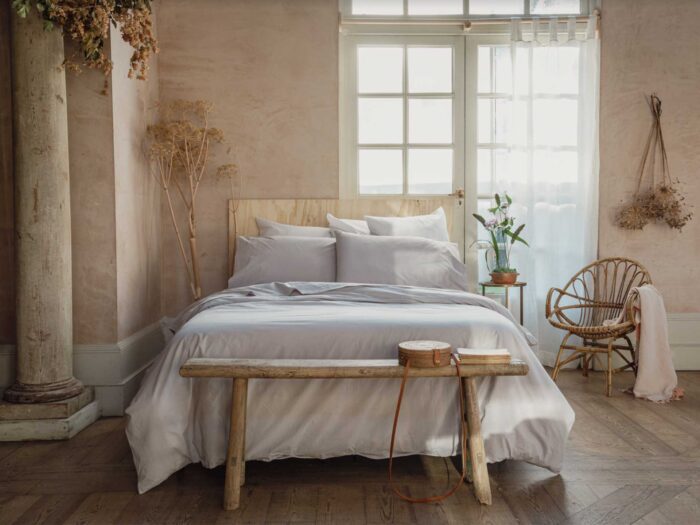
Benefits of incorporating limewash
The application of limewash typically involves multiple coats, with each layer adding depth and character to the final appearance. Limewash’s natural pigment make-up gives it muted and earthy tones. It’s known for its matte, chalky finish, resulting in the perfect, soft rustic look that’s popular in natural and biophilic interior design.
It’s also a great option if you’re looking for a more eco-friendly paint effect. Limewash is made from natural ingredients and therefore emits very low VOCs (volatile organic compounds) into your home, which means lower indoor air pollution.
Limewash is regularly used on exterior walls, given its durable properties and ability to withstand weathering and the elements. It will need repainting less frequently than regular paint. Given its nature, it’s often used to restore heritage properties and for preservation projects.
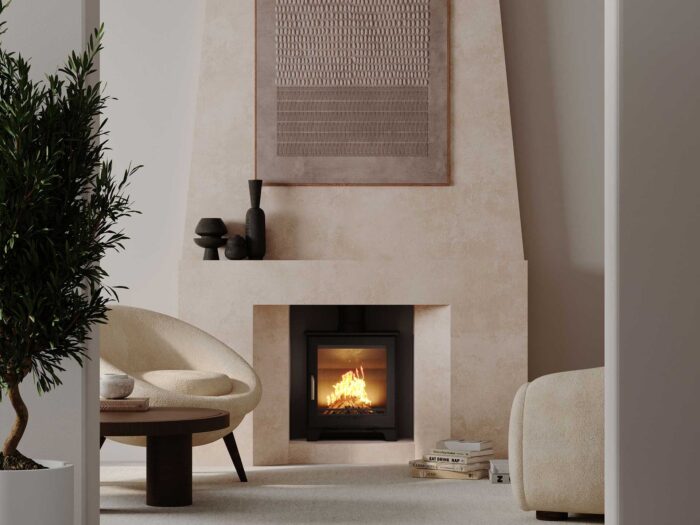
How to apply it
If you are applying limewash yourself, prepare your surface well, making sure there’s no dust or dirt. Then apply well-mixed limewash in thin coats. You’ll need to apply multiple coats and make sure each coat is completely dry before applying the next.
When applying multiple layers, try to slightly overlap broad brush strokes to blend the layers. Limewash does become a lot lighter when it dries, so bear that in mind when you’re deciding how many coats to add. If you don’t want to use traditional limewash, Bauwerk has a large selection of limewash paint.
Consider that there are some downsides to using limewash; mainly that it does require a level of skill and technique to get the application even and consistent.
Lime is caustic and highly alkaline, so you will need to wear gloves and goggles. Be careful when using it and make sure the room is well ventilated when applying it.
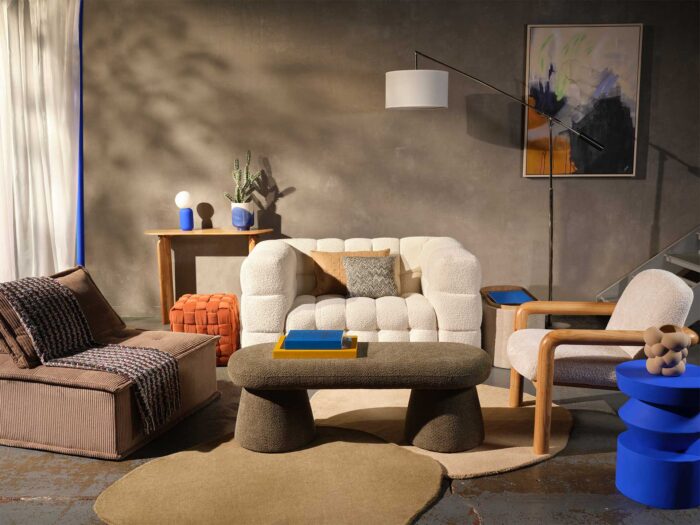
What’s the difference between limewash, plaster and tadelakt?
While limestone, plaster and tadelakt all have similar results when applied to walls, they all have slightly different properties. While limewash is a paint made from slaked lime, water and natural pigments, plaster is made from lime, sand and water.
Plaster is usually used for creating a uniform surface to paint or wallpaper on top of, although increasingly bare plaster walls with their warm, textured tones, are becoming an interiors trend in their own right.
Tadelakt is a traditional Moroccan plastering technique made from a mixture of lime plaster (slaked lime, sand and water) and uniquely olive oil soap. The combination of the lime plaster, water and soap make the material waterproof and give its characteristic sheen.
Tadelakt is often polished with stone once it’s been applied to the wall and is still slightly wet to really bring out the natural shine of the soap. It’s burnished again when the tadelakt is finished and fully dry. Given its waterproof qualities, tadelakt is often used in bathrooms.
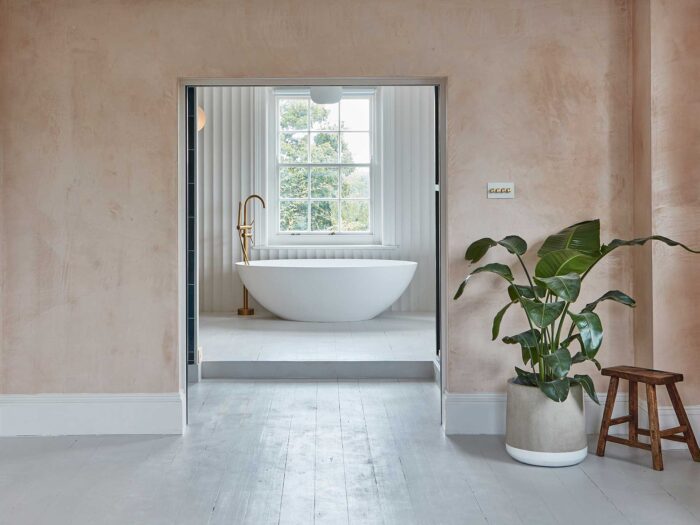
Add limewashed furniture
If limewash walls feel too complex a DIY job, there’s plenty of limewashed furniture on the market to bring the look into your home. Try Cox & Cox, The Cotswold Company and Sweetpea & Willow for everything from limewashed sideboards to limewashed dining sets.
You can upcycle and limewash your own furniture to give it a new lease of life. Like walls, limewashed furniture will need plenty of thin coats to highlight the natural wood grain and to give it a rustic finish. Once all the coats are finished and dry, apply a layer of clear wax to seal and protect it.
For limewash flooring, Ca’ Pietra do a beautiful Carpenter Limewashed Porcelain wood-effect tile to bring the look into your bathroom.
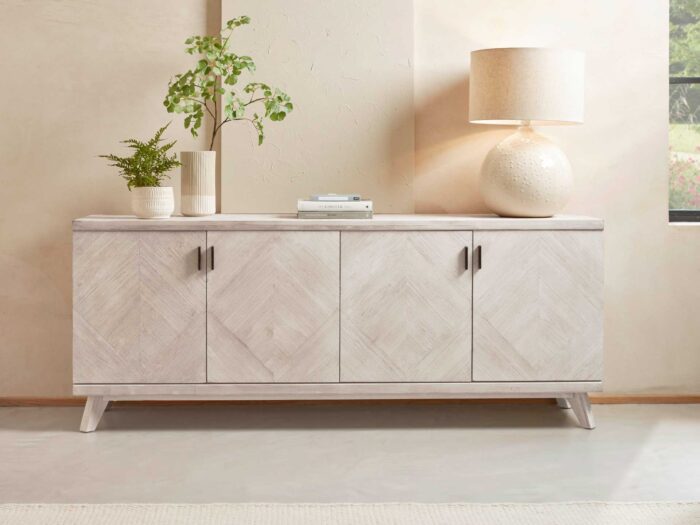
Consider colourful limewash
While limewash is traditionally a range of earthy, neutral hues, you can add vibrant pigments and go for a totally different dark and moody look, which is especially great in a bedroom.
As well as creating a cosy look, coloured limewash has the added benefit of developing a patina over time that will give slight shifts in colour and texture, and deepen its character and feel in the room. Learn how to incorporate limewash with coloured pigments with the Earth Pigment Company’s step-by-step guide.
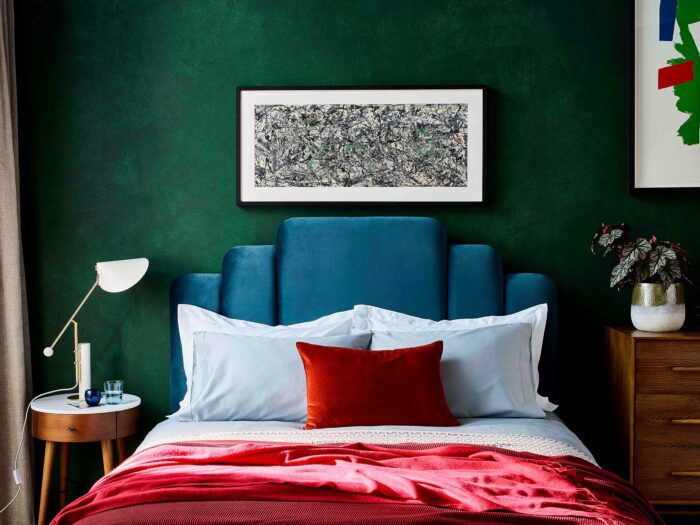
How to apply limewash to brickwork
Applying limewash to exterior brickwork will require a lot of patience, but yield a showstopper look that will last well and develop its own natural patina over time.
How to incorporate limewash to your brickwork will start with thorough surface preparation and clean and repair all of your mortar joints. Again, wearing protective gear like goggles and gloves is essential when applying limewash.
Mix the slaked lime, water and pigments together to get the right hue, and make sure the consistency is super smooth, to help it go on more easily.
Start from the top of the wall and work your way down, ensuring as even coverage as possible and multiple thin coats. Allowing each layer to fully dry before adding the next is vital, so that the limewash fully bonds to the brickwork. Once all the layers are applied and dried, finish with a protective sealant.
